I’m not quite sure which I found more interesting, the rare Cole motorcars on display at the Gilmore Car Museum in Michigan or the family that is making it a mission to preserve the story of the brand.
Especially interesting is 19-year-old Benjamin Burnham-Fleck, who seems to be just the sort of young person to guarantee that the collector car hobby will be in good hands in the future.
There is an urgency to the display of seven Coles, shown in one of the barns on the Gilmore’s campus in Hickory Corners, because the cars will only be there for a couple more weeks. But were it not for the Flecks, the Cole exhibit likely would not have taken place.
Benjamin’s father, Kevin Fleck, is a successful information architecture services director who drove modern high-performance muscle cars. But a few years ago, when Benjamin’s sister was 19, she decided she wanted a vintage Volkswagen camper and the family went to check one out a classic car dealership.
Not only did Chloe buy her 1978 VW Westphalia, but Kevin and his wife couldn’t leave without a 1931 Ford Model A Deluxe roadster.
It turns out that they liked the vintage Ford so much that in the spring of 2018, Kevin and Benjamin drove to Kokomo, Indiana, to bid on another vintage vehicle, a 1909 Maxwell 2-person runabout. But it was at that auction that Benjamin became fascinated with a 1913 Cole touring car that was being sold. Instead of the Maxwell, they bought the Cole (and later would add a 1922 Maxwell to their collection).
Because they weren’t familiar with the Cole Motor Company, the Flecks started doing research. They met Leroy Cole, then well into his 80s and while not related to the motor car company, he had started a Cole Motor Car Registry. The Flecks revived the registry, set out to find as many of the surviving Coles as possible, and bought a few more of the rare cars along the way.
Earlier this year, they helped Gilmore organize a Cole reunion as part of its annual Pre-1942 Showcase car show and convinced several of the owners to leave their cars behind so they could be part of a special Cole exhibit.

Joseph J. Cole was in his mid-30s in 1904 when he bought the carriage company where he worked in Indianapolis. Although the company was successful, producing 3,000 horse-drawn vehicles a year, at the time Indianapolis was challenging Detroit to the claim the title of America’s Motor City. In 1908, Cole produced its first prototype motor car.
According to legend, and to The Standard Catalog of American Cars, Cole took his high-wheeler Solid Tire Automobile prototype for a test drive around the Soldier’s and Sailor’s Monument in downtown Indianapolis. Problem was that the vehicle had no brakes, so Cole kept going around the circular roadway until the car ran out of gas and coasted to a stop.
To avoid such an oversight when production began, Cole brought in engineer Charles Crawford, who would later help produce engines for General Motors’ Northway division and would gain fame for his work at Peerless and Stutz.
Cole produced 176 of his high-wheelers, and perhaps the only one surviving has been part of the exhibit. Kevin Fleck notes that this is an early example of the 1909 Model D because it has no pedals. There is a hand brake that is part of the transmission shifter, and a lever beneath the steering wheel to control fuel flow to the 2-stroke, 2-cylinder engine.
Fleck notes that a pair of pedals were added during the high-wheeler’s production run.

In 1910, Cole replaced the high-wheeler with the Model 30. The exhibit includes a 1911 30 Model L roadster, on loan from the Indianapolis Motor Speedway Museum because Cole’s roadsters were built to drive during the week and to race on weekends. Cole guaranteed the roadsters could achieve 65 mph. One of them won the 1910 Vanderbilt Cup event and Coles won a 24-hour race at Brighton Beach and other events.
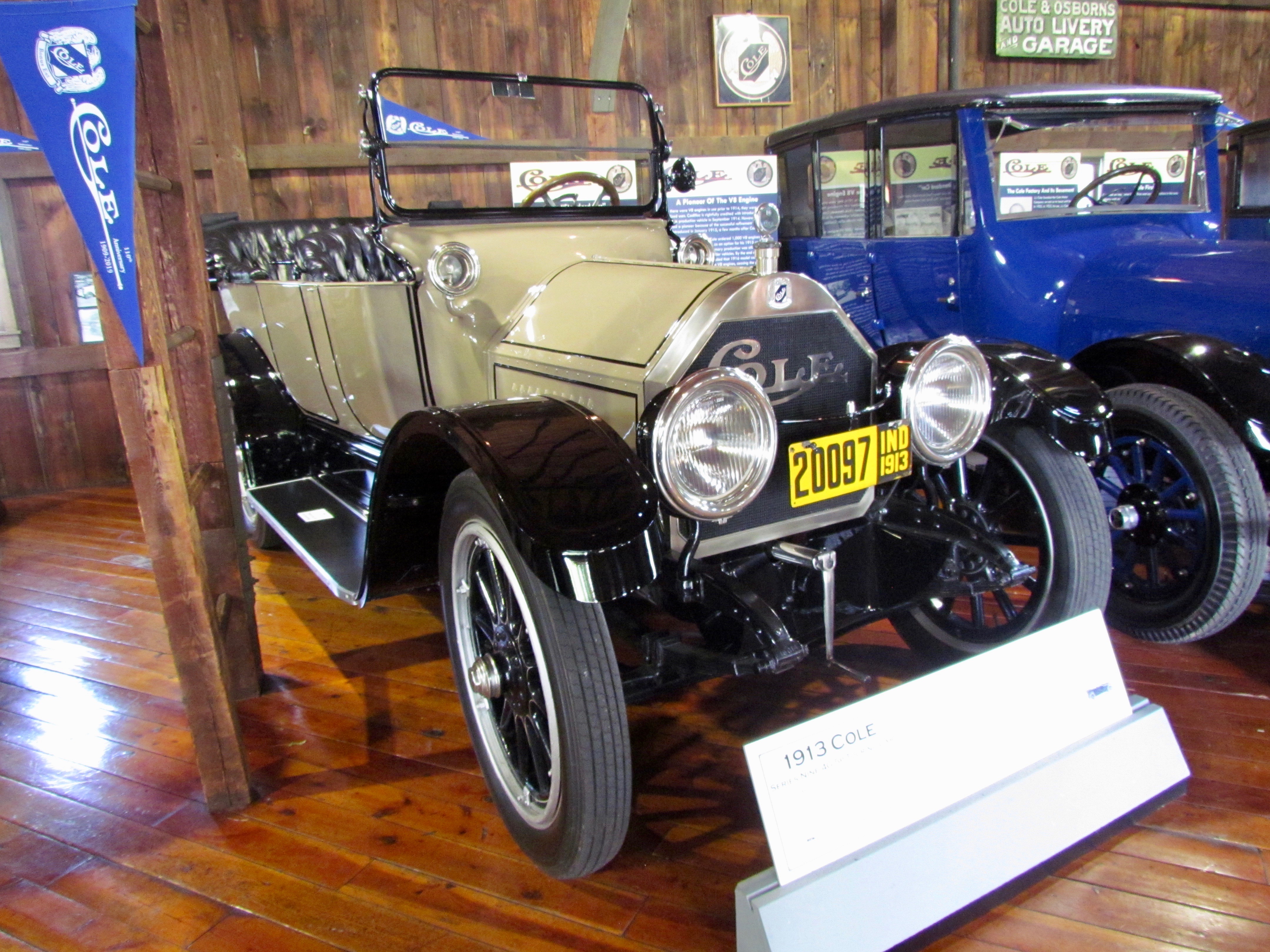
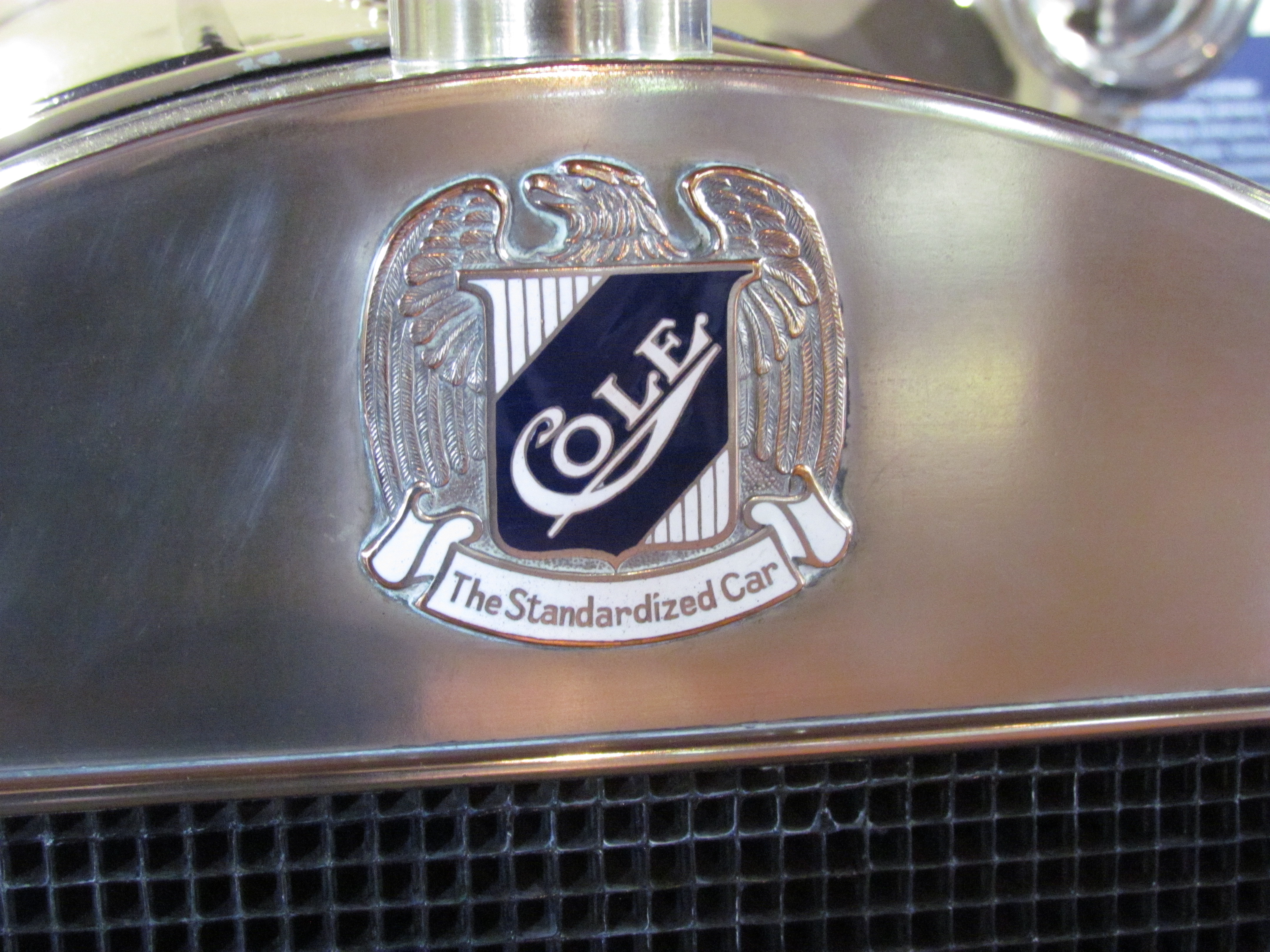
Fleck notes that Cole didn’t believe in model years but preferred to simply produce new series and models when it made sense. In 1913, he introduced “The Standardized Car” with a six-page advertisement in the Saturday Evening Post.
Fleck explained that to Cole, standardization didn’t mean efficiency on an assembly line but producing cars that included components that set the standards of quality in the industry. He also worked with the Society of Automotive Engineers to stage the first automotive standardization conference.
The effort is showcased in the exhibit by a 1913 Cole Series Nine 4G 5-passenger touring car. Cole was among the first to equip his cars with electric rather than crank starters and with electric lighting. The 1913 Series Nine also had a dashboard with a locking glovebox, which became the standard pattern for the industry.
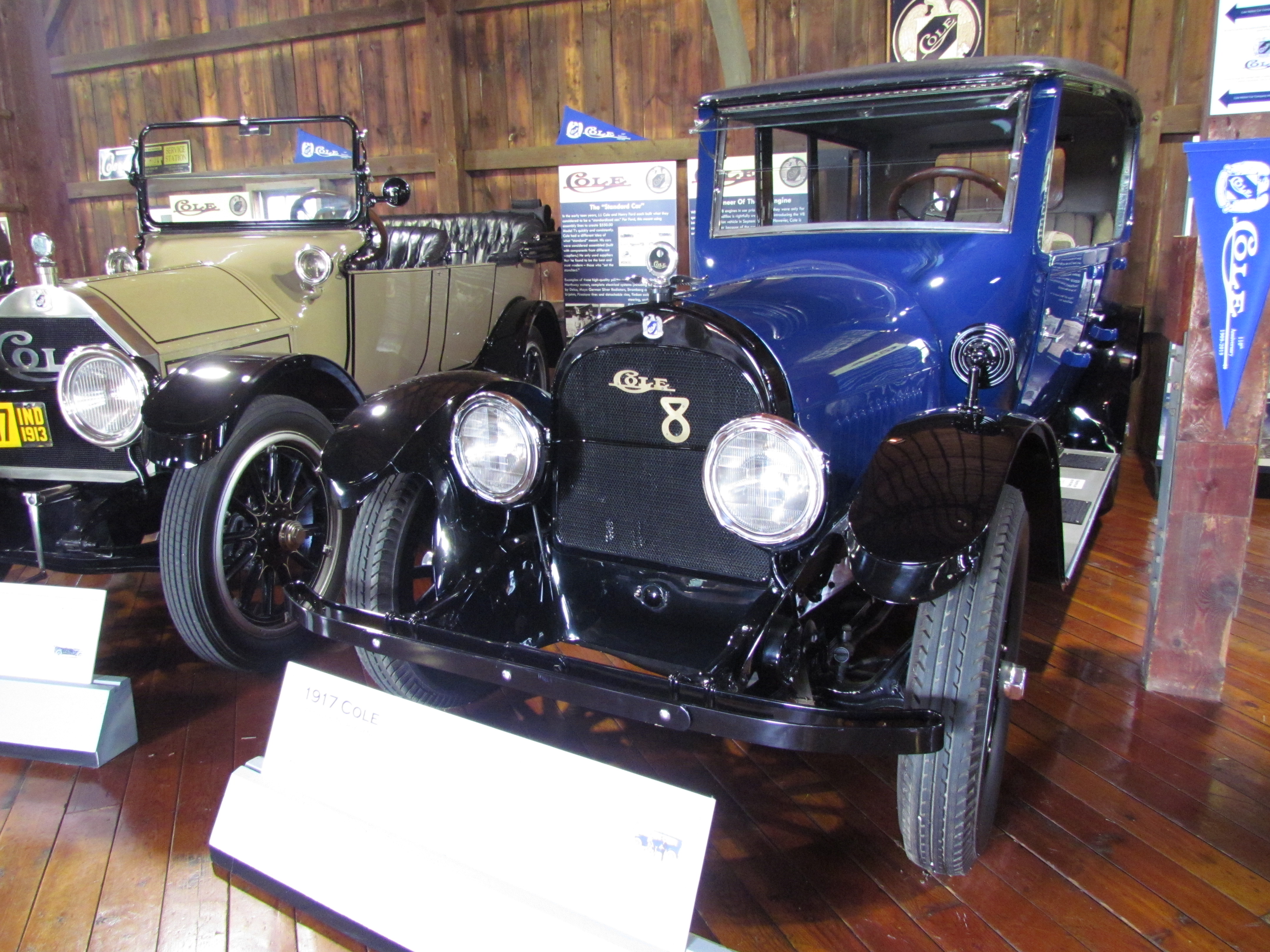
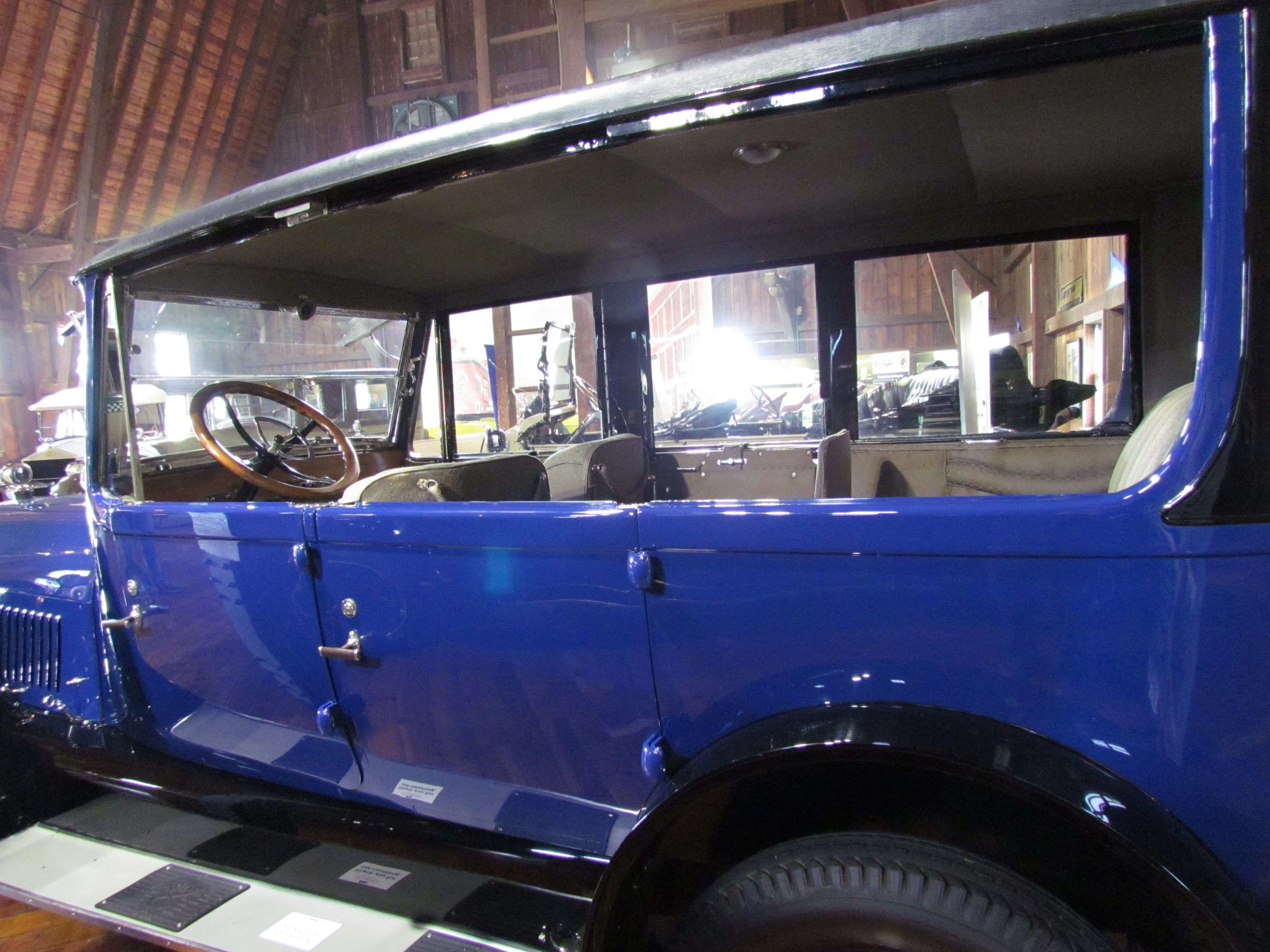
In 1915, Fleck points out, Cole introduced the first 90-degree flathead V8 engine with detachable cylinder heads, an engine produced by Crawford and Northway. The 346cid engine produced 70 horsepower at first; later that figure was upped to 90.
On display at the Gilmore is a 1917 Cole 7-person Toursedan, a car with an unusual but wonderfully versatile architecture. Produced in partnership with Springfield Coachbuilding, the Toursedan could be configured as a standard sedan or what we’d now call a hardtop.
This was achieved by having windows that could retreat into the bodywork, and the one on display at the museum has its windows up on the right side but down on the left side to showcase the versatility.
Another feature of this car is its “American ‘Flag Blue” color, a shade that matches the blue in the original American flag, which J.J. Cole achieved with the help of Betsy Ross’s granddaughter.
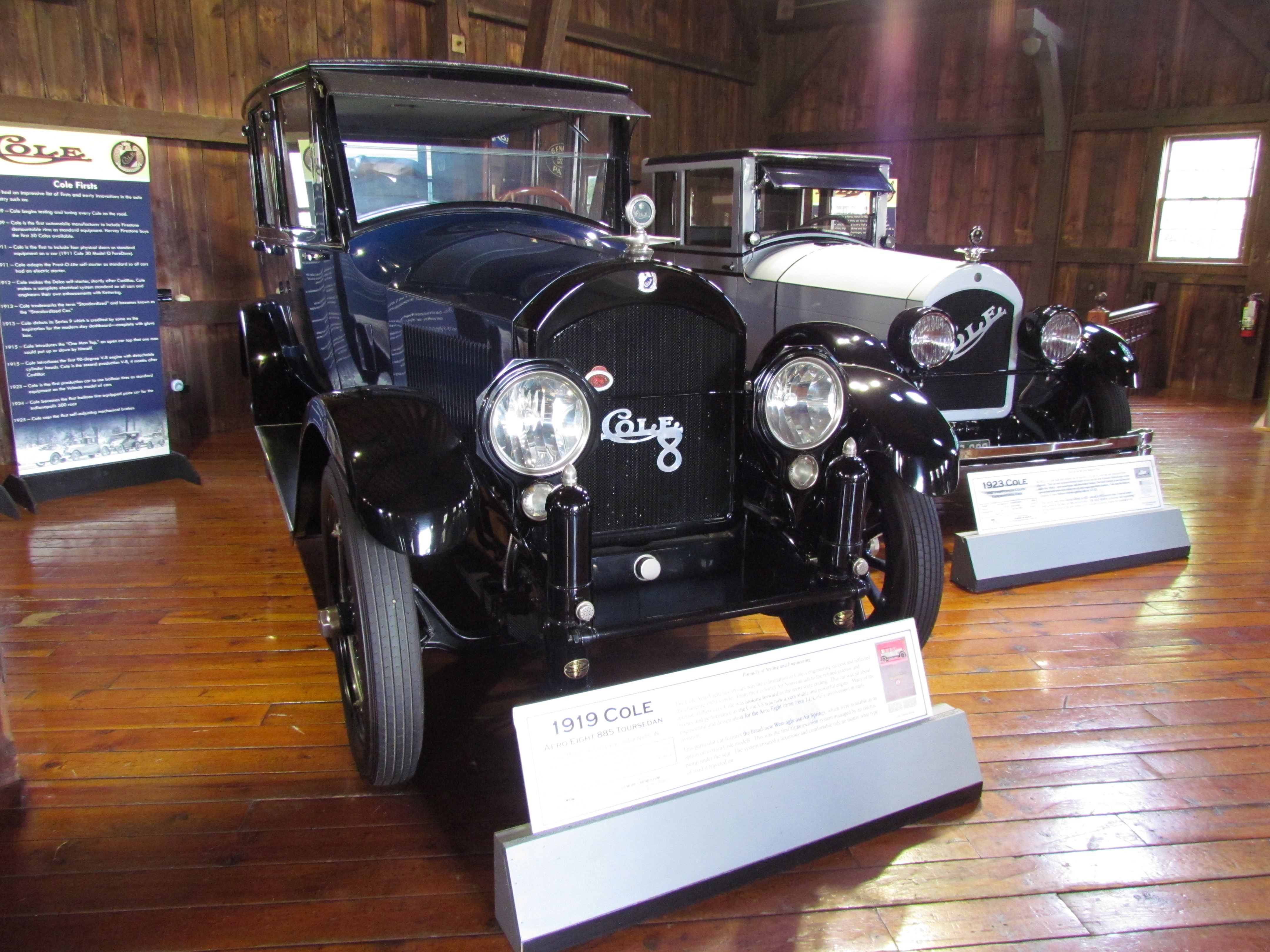

In 1919, and in conjunction with Westinghouse, Cole introduced air suspension to his cars, such as that on the 1919 Cole Aero Eight 885 Toursedan loaned to the Gilmore display by the Auburn Cord Duesenberg Museum. A compressor was mounted beneath the front seat and fed front and rear air cylinders, which provided a smooth ride regardless of the road surface.
The Aero Eight took its name, and its hood ornament, from Cole’s involvement in the early years of aviation. He had become friends with the Wright Brothers and put one of his 4-cylinder engines on one of their airplanes and entered the craft in a transcontinental race.
Although the craft crashed into the Rocky Mountains, it was repaired and resumed the competition, finishing in third place.
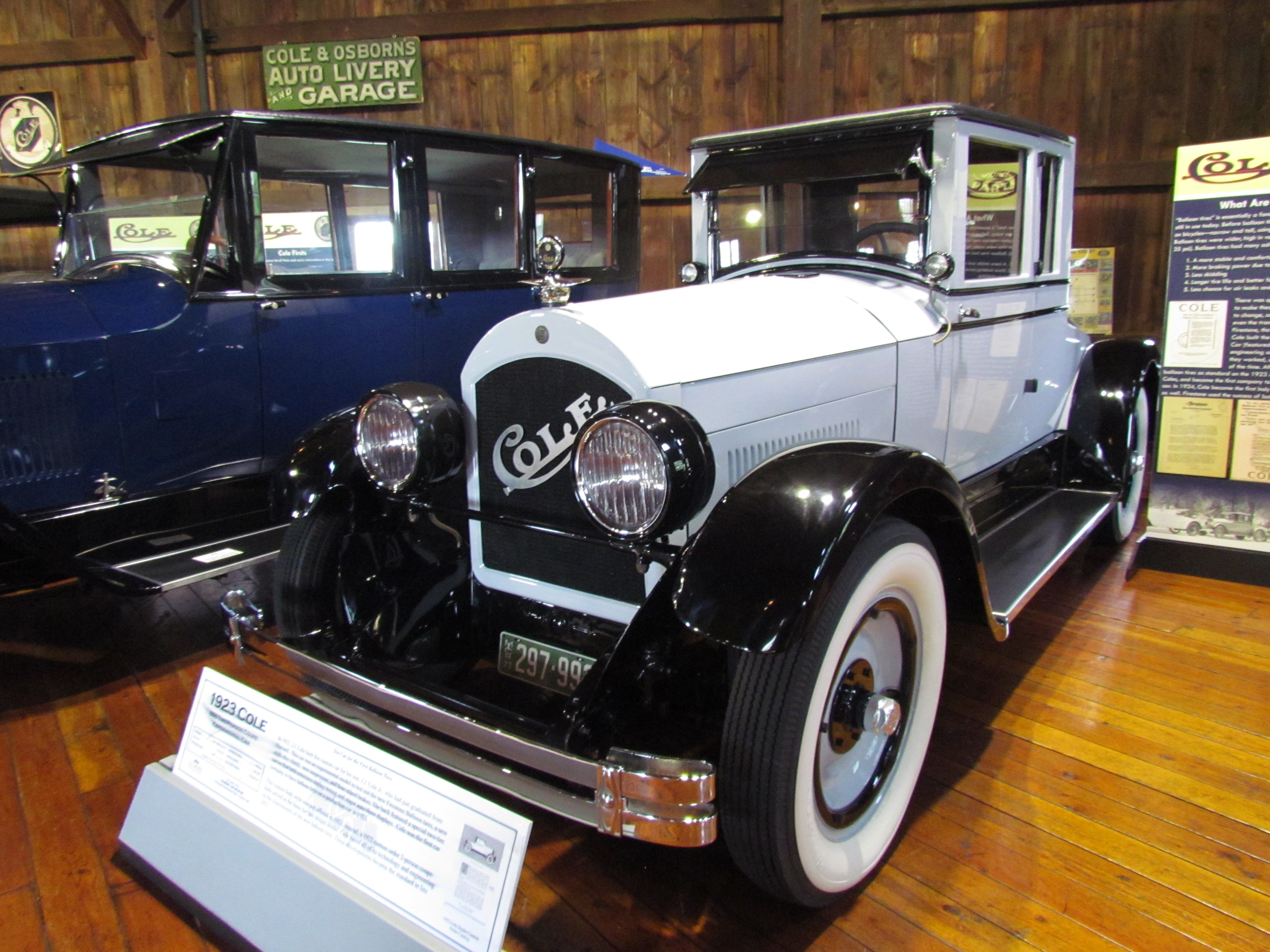
In 1922, Cole worked with Firestone to develop balloon tires. Cole built a one-off prototype vehicle as a test bed. Because of the tires, the car had special brakes, suspension and other components. The car not only was a test bed for the tire development, it was displayed at a variety of auto shows. It also was presented to Cole’s son, J.J. Cole Jr., after his graduation from Harvard.
J.J. Jr. added an exhaust cutout to the car so he could take full advantage not only of the horsepower but the sound of the V8 engine.
Known as the 1923 Cole 890 Two-Person Coupe Experimental Car, the unique vehicle was owned by the Cole family until the 1990s, eventually from the family by Leroy Cole, who sold it to Benjamin Burnham-Fleck. Leroy Cole also donated his Cole archives to the Gilmore museum’s library.
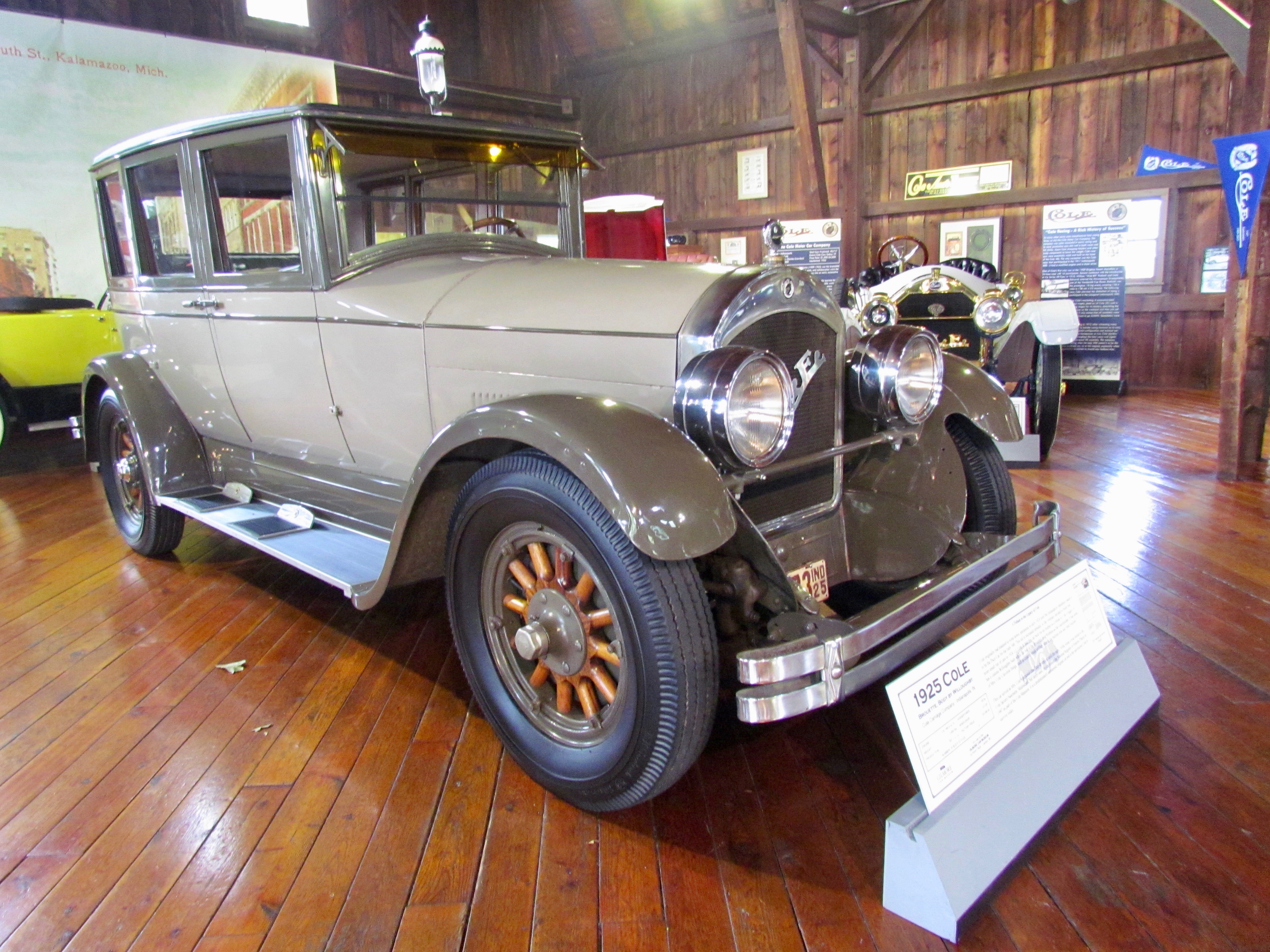
The other Cole in the exhibit is the last one produced, a Willoughby-bodied 1925 890 Brouette sedan built for J.J. Cole’s wife by their son, J.J. Jr. Fleck pointed out that after making profits nearly every year, by 1924 Cole not only didn’t like where the auto industry, and the entire American economy, was headed financially, but was unhappy with many of his suppliers because they wouldn’t accept his input for improving their products. He decided it was time to liquidate his company rather than suffer losses.
Cole’s plan was interrupted when the Indianapolis Motor Speedway asked him to provide a new pace car for its 1924 race, so he did a final series of 700 vehicles in the 890 series. At least some of the cars featured what Cole called “silver frost finish” that we now recognize as an early form of chrome, as well as self-adjusting brakes.
Mrs. Cole’s car was the only one with Willoughby coachwork, other Brouettes had Robbins bodies, and because she preferred traditional artillery-style wood wheels, a special set with hickory spokes was designed to be wide enough to wear Firestone’s new balloon tires for her chauffeur-driven 890 sedan.
That run of cars completed, Cole closed his company. Ten months later, at the age of 54, he died of a heart attack.
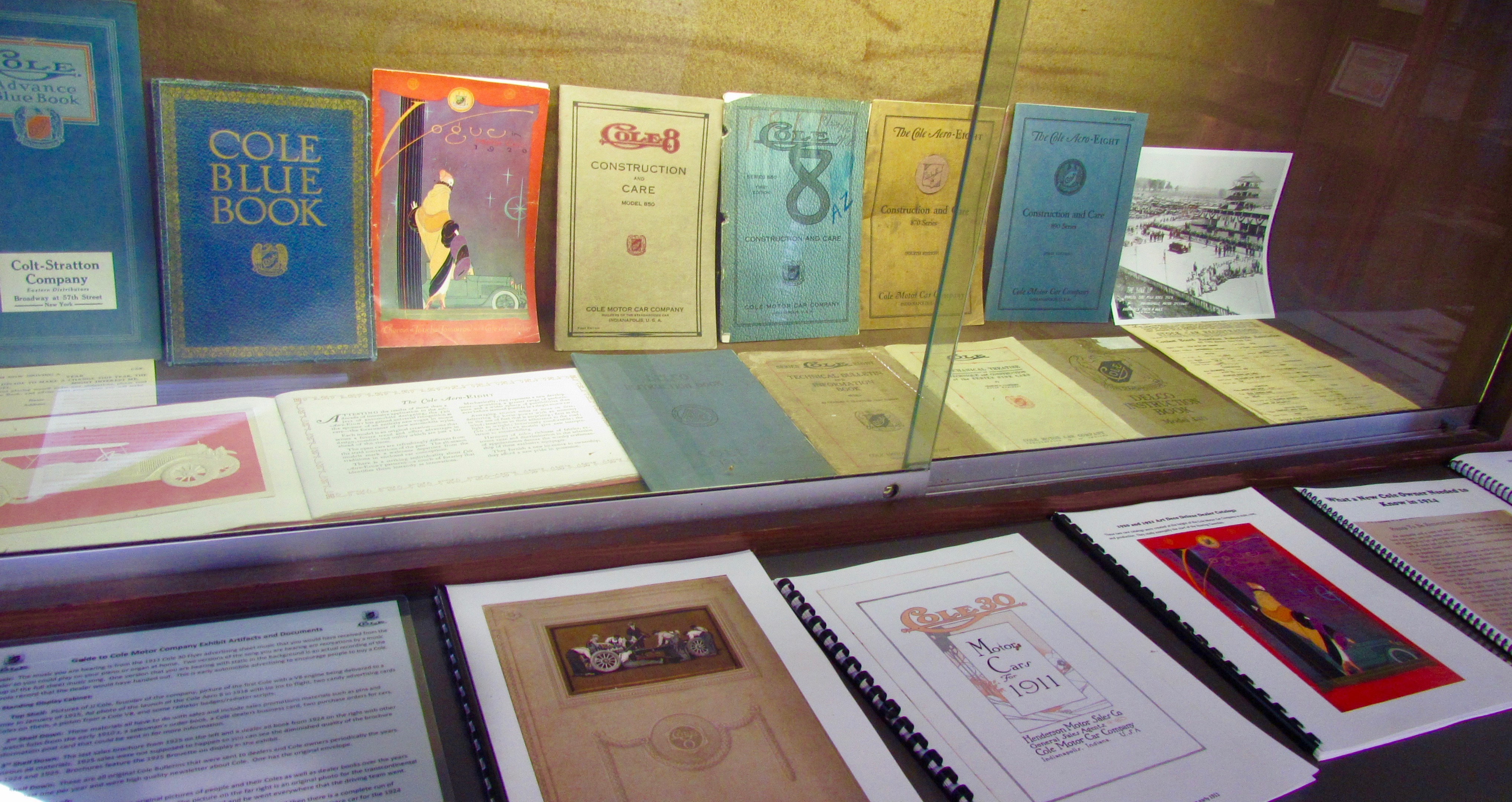

Between 1909 and 1925, Cole Motor Co. produced 40,717 vehicles. Ten of them were at the Gilmore for the Pre-1932 showcase. Only 77 are known to still exist, though Kevin Fleck believes there may be as many as 100 surviving. He also has learned that one was destroyed by the wildfires that swept California in 2017.
The Gilmore exhibit includes not only seven Coles, but wonderfully detailed signboards (including copies of a letter Harvey Firestone sent to Henry and Edsel Ford, and an endorsement from Ford’s close friend Thomas Edison, after Cole proved the capabilities of balloon tires), vintage photographs, a display of Cole brochures (several of which have been reproduced so visitors can page through them) and even a recording of the song Cole commissioned as part of the launch of the Cole 30 Flyer.
While the Cole exhibit ends soon, Benjamin Burnham-Fleck’s unique 1923 Cole 890 Two-Person Coupe Experimental Car is on a long-term, multi-year loan for museum display.
In the meantime, he’s taking a year off school, but is doing graduate-level research into the history of the Cole Motor Company and is sharing what he’s learned not only with his father but with anyone else who has an interest. His knowledge already is extensive.
Note his name for future reference, and know that with young people like him, the hobby will be in good hands.



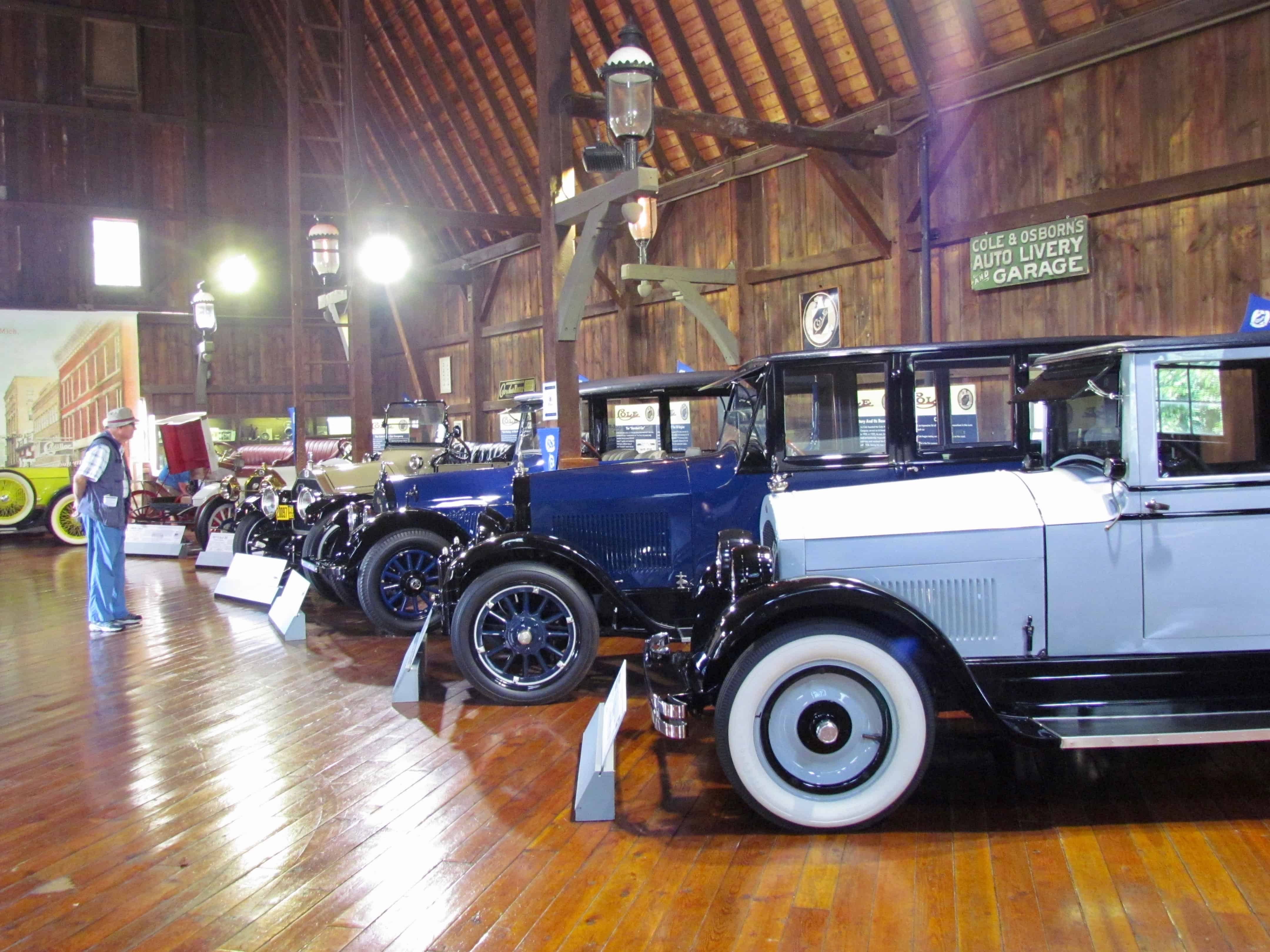
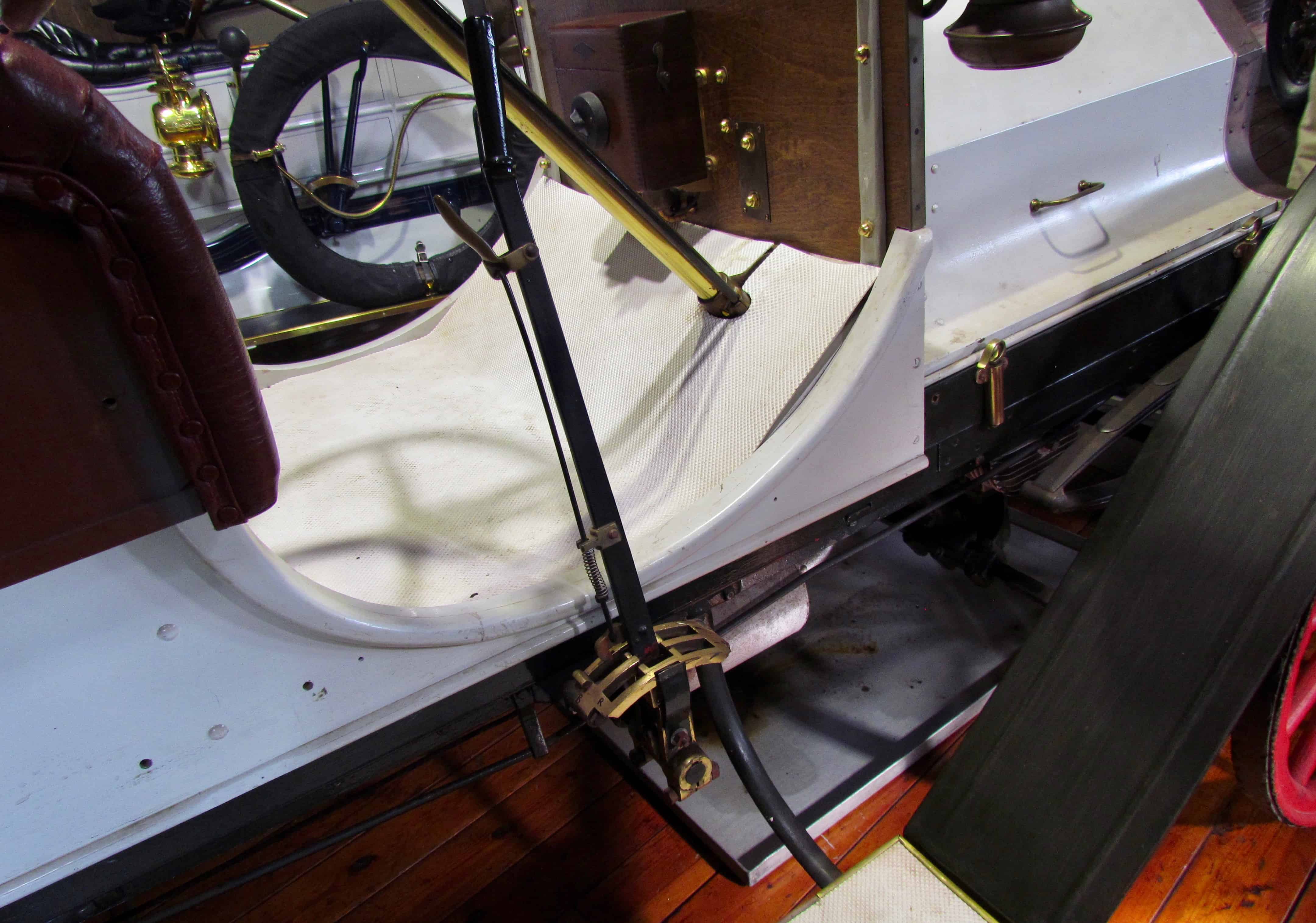
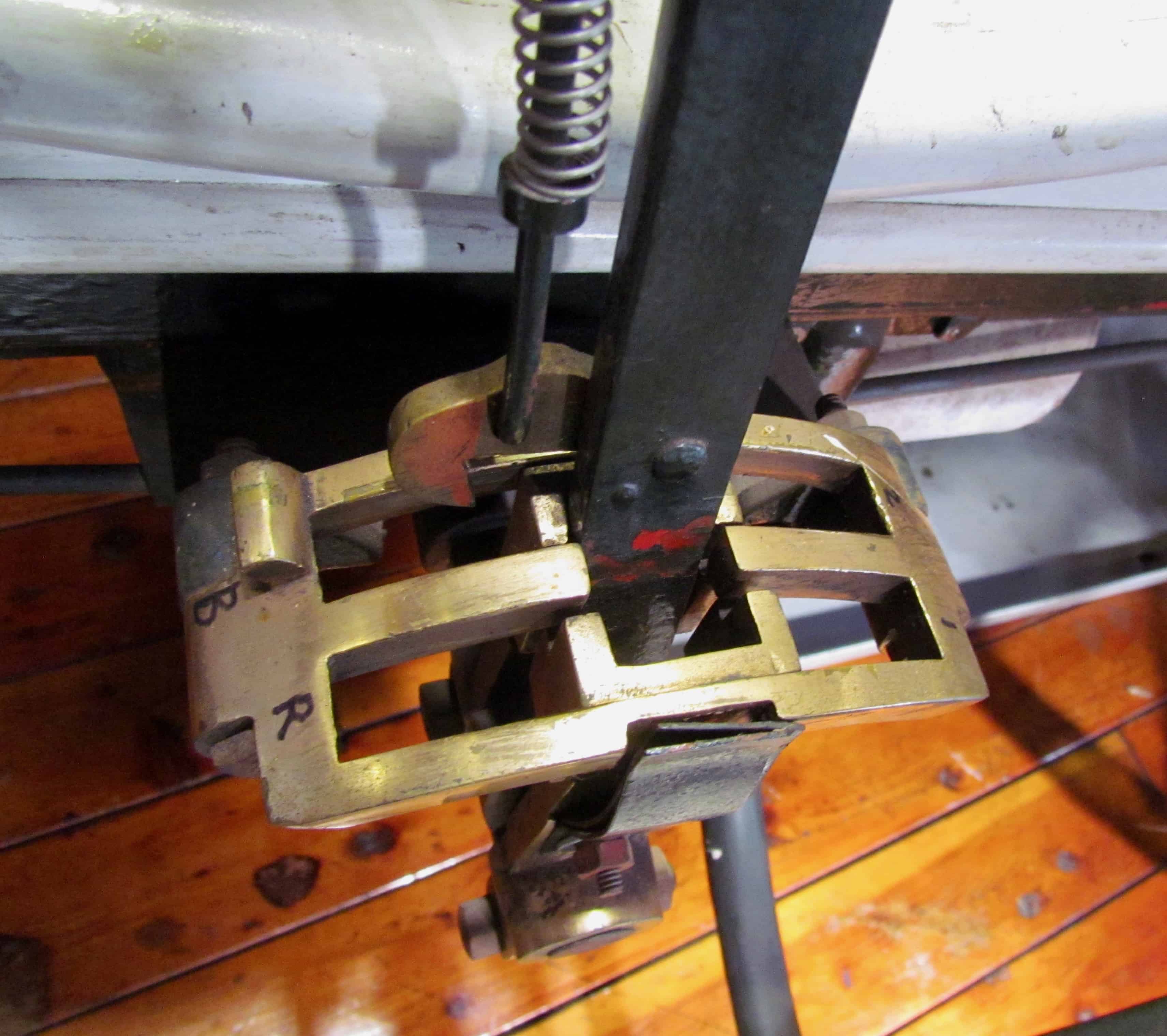


Got to meet Benjamin at the Concours d’Elegance of America this year and was equally impressed, as you were , with the depth of his knowledge . I loved seeing his experimental coupe and was pleasantly surprised to see it again, along with the other Cole’s when I travelled with my wife and her brother and sister in law to the Gilmore in August.
Fantastic article! I will be at the Gilmore this week (Oct 10-11) and I’m excited to see this exhibit.
A 1916 Cole is sitting out back of our house at Borneman’s restoration company. We had no idea of this type of car. It is a beauty. If I could share the pictures I took, I would.
Hi Lisa,
Would love to find out more about your Cole car.
Yours
Warren
New Zealand
Email,
Hello Warren,
My name is Trevor Cole and I am from North Taranaki. I would like to talk to you please. My phone numbers are 06 754 6930 and 0273 38 12 78. Email is [email protected]
thank you,
Trevor Cole.
I would like to find out more ,
Bob Cole
I have parts of a 1916 Cole in New Zealand.
Love to hear from you.
Warren
I own a 1916 Cole. What parts do you have?
My great grandfather John Jesus Abreu owned the Cole dealership in Lahaina, Maui. The name of the dealership was the Royal Hawaiian Sales Co. circa 1920 . Please if you have pictures or any information on this early Cole dealership could you contact : Eric ( Abreu) Partika , [email protected]. Thank You.